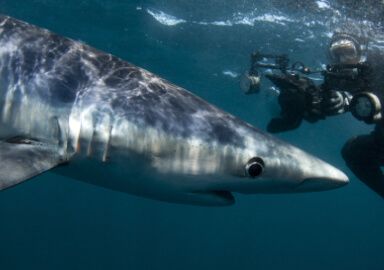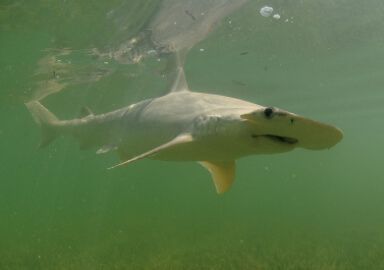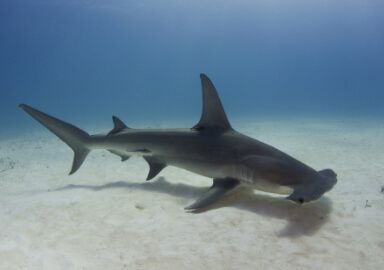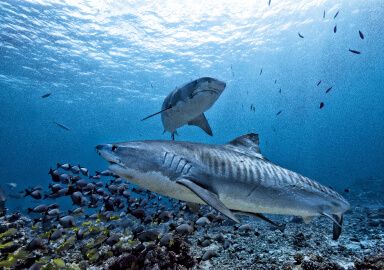Shark
Streamlined silhouette, high dorsal fin, and a toothy mouth – the familiar shape of the shark never fails to stir a mix of emotion, including the desire to catch one
View 128 listings
128
listings
–
price starting from
20
countries
–
to the nearest trip
Where and When?
Sharks can be found in every ocean and sea, although different species prefer different waters. Some, like Greenland and porbeagle shark, stick to colder oceans, while others, like the mako shark, stick to the tropics, but you are sure to find a number of options for shark fishing wherever there are fishing charters and captains. Most shark species are nomadic, and their abundance on these or those shores can be unpredictable, but most high seasons for offshore and deep sea fishing are good for sharks as well.
About Shark
Most people are familiar with the great white shark from the “Jaws” movie, and the stubby muzzle, big mouth with a triple row of razor-sharp teeth, and characteristic dorsal fins have become instantly recognizable symbols in popular country. However, sharks come in many forms and shapes, including but not limited to the hammerhead with its unusual flat head, the ground sharks with their long snout, squatiniformes that resemble stingray and scats, and the thresher shark with tail as long as the body. All sharks have skeletons that are composed of cartilage, rather than bone tissue, and replaceable teeth. They are able to maintain temperature of some parts of their body above the temperature of the water, which helps them achieve impressive speed. The current world angling record for great white shark is 2664 lbs 0oz (1208.38 kg).
How to Catch?
The biggest kinds of sharks, the whale sharks, feed on plankton, and are hardly ever caught by sports fishermen. Many species of sharks, including the great white shark, and the hammerhead, are endangered. It is not usually illegal to fish for these species, because it’s hard to draw a line between conscious and accidental catch, but they need to be released as soon as possible, and the laws and regulations usually prohibit taking them out of the water. Some states require special equipment, such as dull hooks, to be used in order to minimize the damage. Deep sea fishing, both trolling and drifting, with live bait, is the preferred method for catching bigger species of shark. Smaller kinds of shark, such as bonnethead, can be caught from the shore, with artificial lures and spinning, and even flyfishing gear.
Listing Types
Similar Species
 Blacktip Shark
19 offers
Blacktip Shark
19 offers
 Blue Shark
8 offers
Blue Shark
8 offers
 Bonnethead Shark
6 offers
Bonnethead Shark
6 offers
 Bull Shark
12 offers
Bull Shark
12 offers
 Great White Shark
1 offer
Great White Shark
1 offer
 Greenland Shark
1 offer
Greenland Shark
1 offer
 Hammerhead Shark
8 offers
Hammerhead Shark
8 offers
 Lemon Shark
3 offers
Lemon Shark
3 offers
 Leopard Shark
1 offer
Leopard Shark
1 offer
 Mako Shark
27 offers
Mako Shark
27 offers
 Porbeagle Shark
2 offers
Porbeagle Shark
2 offers
 Thresher Shark
4 offers
Thresher Shark
4 offers
 Tiger Shark
10 offers
Tiger Shark
10 offers
 Tope Shark
2 offers
Tope Shark
2 offers








